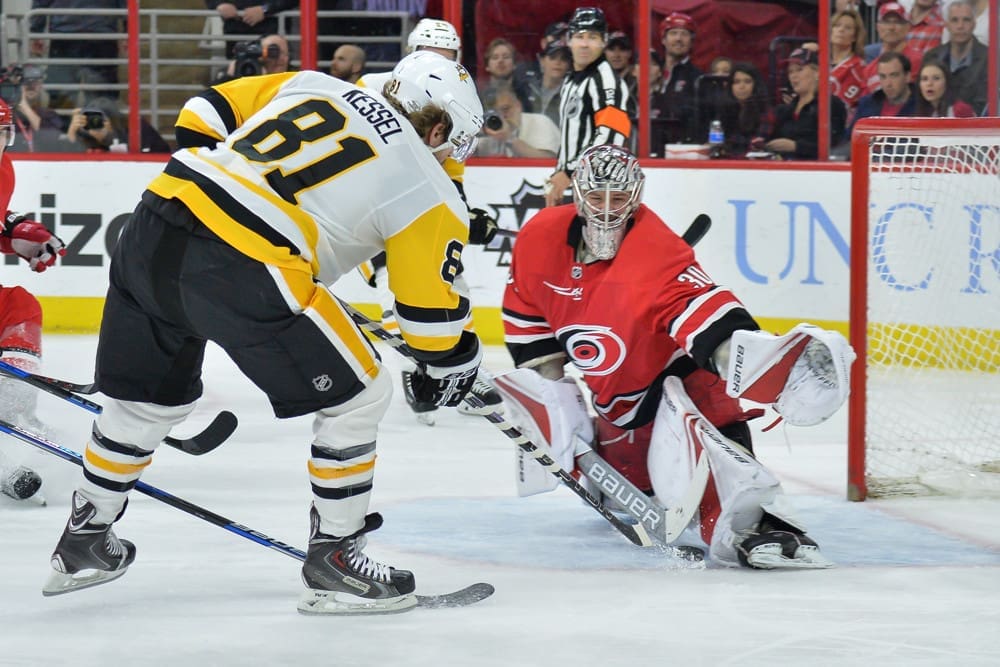Penguins
Thornberry: Phil Kessel and Evgeni Malkin Could Produce Epic Results
Sponsored by Attorney Joshua R. Lamm. Injured In an Accident or On a Motorcycle? You Need a Good Attorney. Call Josh! 724-272-4337!

Phil Kessel has graced us with countless thrilling highlights on the ice and provided legendary social media content just by being…Phil Kessel.
Even a trip through pages of his statistics and past performance with other players does not offer the “same old sh**.” Only “Phil the Thrill” could score 92 points in a season, and have people questioning where he fits within the Penguins’ lineup, and with which center.
The question is reignited with the Penguins depth down the middle. But there is only one player at the heart of this conversation. He may be the centerman that Kessel deserves, but is he the centerman that he needs? Of course, we are talking about Evgeni Malkin, not Batman.
Remembering the ‘HBK’ Line
The Penguins’ 2016 journey through the playoffs was one of the most impressive and entertaining runs to a championship in recent memory. One of the highlights of this historic season was the ‘HBK’ line of Kessel, Nick Bonino, and Carl Hagelin, which made the championship possible.
The magic of the trio faded long before Bonino left via free agency in 2017, but the results that they produced in 2016 were impressive on the ice, and on the stats sheet.
Part of what made coach Mike Sullivan’s system so disruptive to the rest of the NHL was the Penguins’ focus on aggressive play and puck possession. Within this structure, the club’s “third line” thrived.
Focusing on the time Kessel and Bonino played together during the 2015-16 season, the pair controlled the puck 58% of the time. Even more impressive was the goal differential of nearly 79% in favor of the infamous duo. This success carried over into the playoffs with 52% puck possession and 65% of goals in favor of the Penguins.
So what exactly made this line mesh so well? Oddly enough, their massive success may have been because of their differences: Bonino had a creative streak, but was mostly a ‘meat and potatoes’ type of player, while Hagelin was the speedy, aggressive forechecker. Both allowed Kessel to display his dynamic playstyle and score goals as only he can.
But what happens when you put two like-minded superstars on the same line? At times they can be fantastic, and other times…not so much.
Why Not the ’HMK’ Line?
A regular deployment of Hagelin, Malkin, and Kessel on a line is what many fans crave, and this appears to be the desire of the players as well. But does it make sense?
Last season, Malkin and Kessel created some head-scratching statistics. In the 578 minutes of five-on-five play that the pair shared the ice, they controlled the puck nearly 52% of the time. But the goal differential, which usually reflects the possession numbers, was a disappointing 46% with 26 goals for and 30 goals-against.
In this relationship, Kessel benefited far more than Malkin; Kessel saw his Corsi-For drop to 49% when he was on a different line, while Malkin’s numbers rose to nearly 54% and his goals-for jumped to almost 58% without Kessel.
Malkin conceded that the pair needs to improve while playing together, as quoted in a recent PHN article by Dan Kingerski.
“I like playing with him for sure. We understand each other. Defensively, we need to play better. I think coach (Mike Sullivan) was a little bit upset when we play together,” Malkin said.
As Bonino and Kessel’s diverse styles complimented one another, Malkin and Kessel may be too similar, if not in form, but in need to push offense and be creative. They both like to take risks, and both are prone to costly turnovers. But both are smart players, they are aware of the need to improve certain aspects of their game, and will make an effort to do so.
If they can limit their mistakes, and have the appropriate linemate introduced, the results could be epic. Hagelin didn’t play with the superstars as it seemed last season, but when he played with Malkin and Kessel, the trio’s numbers improved. When the Penguins added the Swedish winger to the equation, the lowly goal differential got a 10% boost.
Change Is Needed…But Not Too Much
Adjustments have to be made for the ‘HMK’ line to be successful, but if they happen, big things will follow.
While he is not alone, the biggest changes will have to be made by Malkin. Long-standing habits will have to be broken to limit turnovers, particularly eliminating the blind passes, and attempting to skate through an entire team by himself.
But those things are what make Malkin a generational talent. Sometimes those blind passes turn into breathtaking goals, and we have all seen more than a few instances where he did skate through an entire team and bury the puck into the net.
You don’t tell Mozart how to write a symphony.
Malkin and Kessel may have struggled together last season, but given Malkin’s awareness of the deficiencies, it would be unwise to bet against them.












